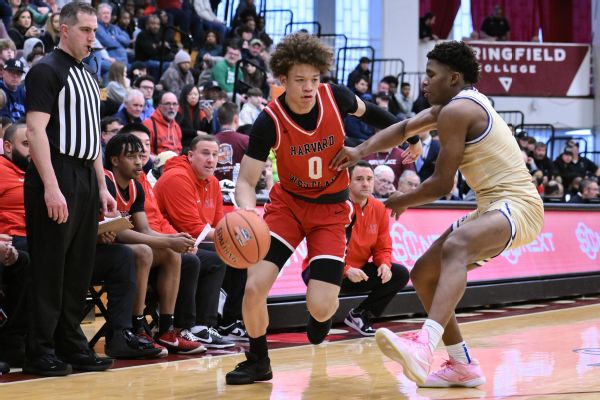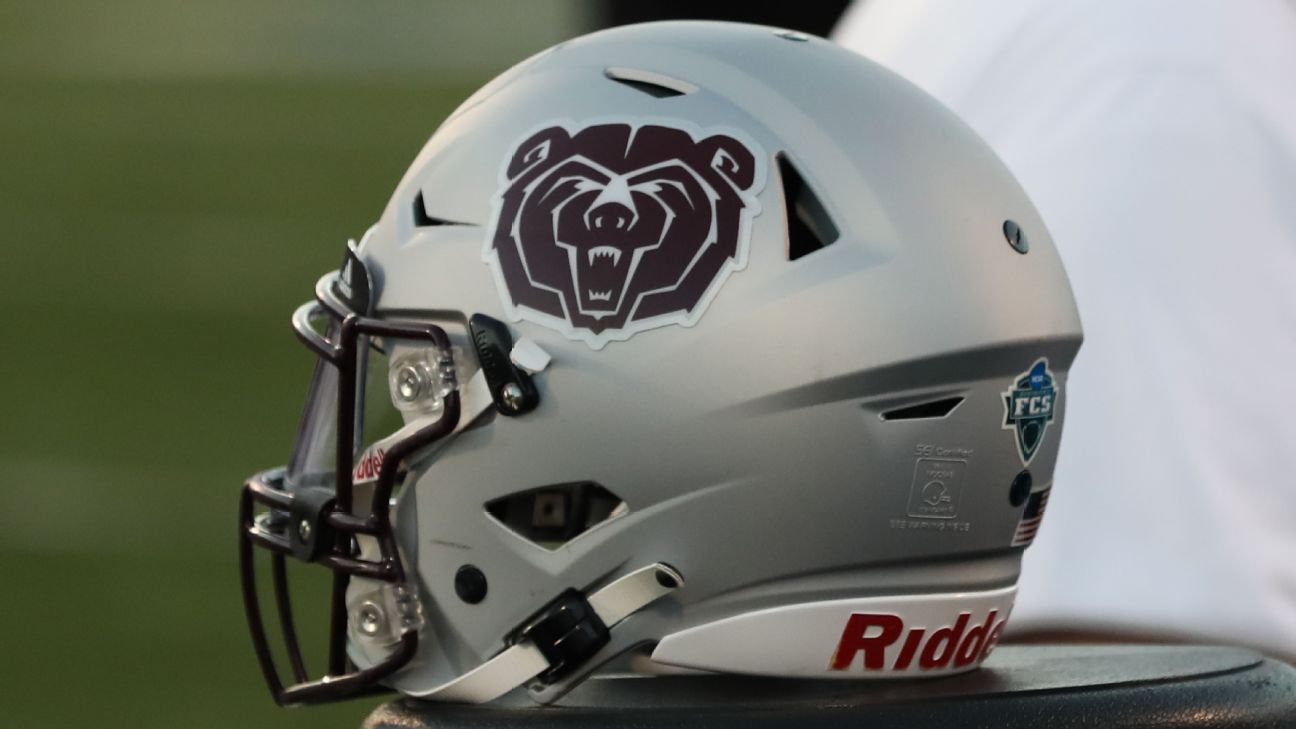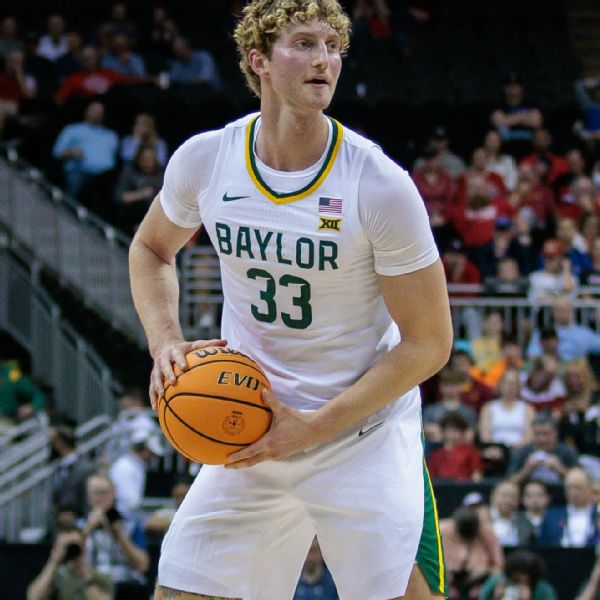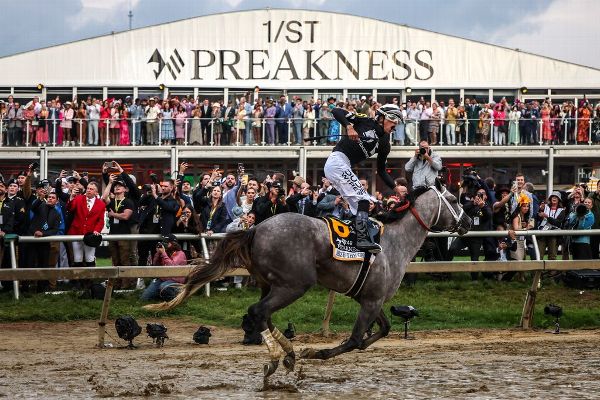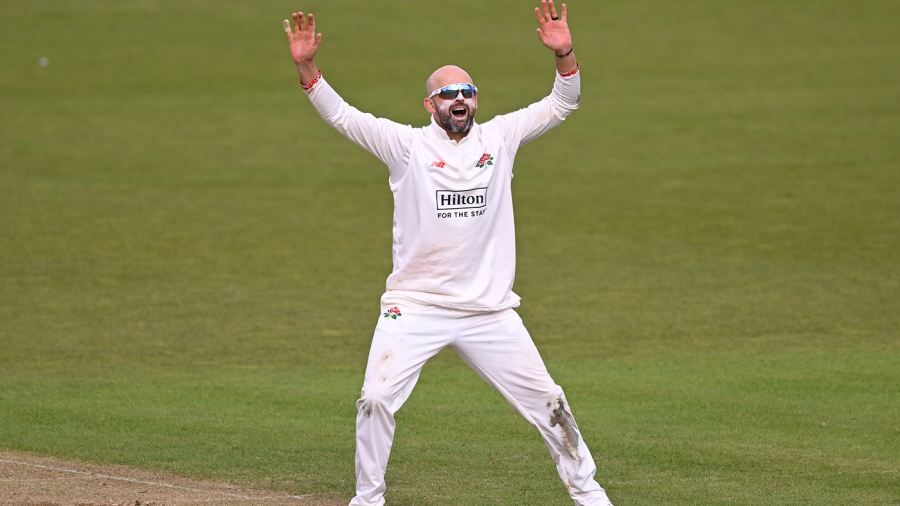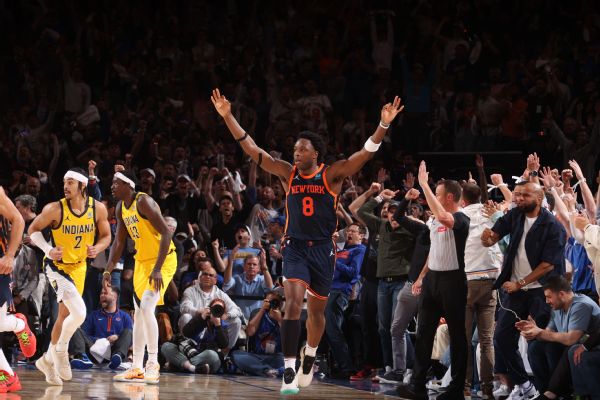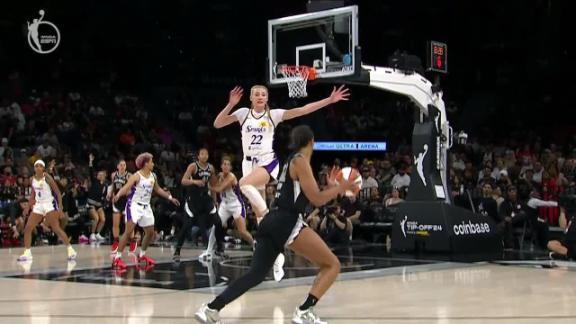![Michael Penix Jr [608x342]](https://a.espncdn.com/photo/2024/0503/r1327999_608x342_16-9.jpg)
Leverkusen complete unbeaten Bundesliga season
College football coaches love tracking the NFL draft, not only the players they helped develop but others they recruited or faced in recent years. The coaches paid close attention to the events in Detroit last weekend. They also bring a distinct perspective to draft evaluation, after recruiting many of the top players, coaching them and game-planning for them.
I spoke with head coaches and assistants from every power conference after the draft to gather insight on the players, the teams, the hits and the misses. Here's an evaluation of the 2024 class through the eyes of college coaches (note: coaches are listed according to their roles during the 2023 season):
Jump to a section: Biggest takeaways from Round 1 Coaches dish on defenders who dropped Defensive draft | QB Rattler, LB Wilson tumble Top schools: Michigan, Texas, USC, LSU, Oregon
First-round takeaways: The Penix pick, QB output, run on offensive linemenThe top of the draft unfolded mostly as predicted, as USC quarterback Caleb Williams went No. 1 to the Chicago Bears, followed by quarterbacks Jayden Daniels (LSU) to the Washington Commanders and Drake Maye (North Carolina) to the New England Patriots. The big surprise came at No. 8, when the Atlanta Falcons drafted Washington's Michael Penix Jr. despite having signed free agent Kirk Cousins to a $180 million contract.
After injuries hindered his promising career at Indiana, Penix starred at Washington, showcasing a strong arm and willingness to hit all corners of the field from the pocket.
"I was surprised," a power-conference coach said. "It makes a lot of sense when you think about how hard it is to have a good quarterback flow in your organization, having that guy ready to roll. The way he threw at his pro day and the way he ran, I felt he was gaining a lot of momentum. I thought, 'Somebody's going to take him in the first round and probably in the first 15 picks.'
"I just didn't expect [Atlanta] to be the one."
Coaches who faced Penix saw him as a first-round pick, but thought two factors -- injury history, which includes two tears to his right ACL and separation/dislocation of both shoulders, and age (he'll turn 24 on Wednesday) -- could move him down the order.
"You want to go the Jordan Love route, sort of a younger guy, so he's still only 24 when it's time for him to take the reins, or 25 if you have Cousins for three years," an SEC defensive coordinator said. "What is [Penix] going to be, 27, 28 years old when he finally gets to take the reins? I guess QBs can last longer now, play into their 30s. But yeah, that one was interesting."
The push for quarterbacks in the first half of the first round, even after Williams, Daniels and Maye, jumped out to college coaches. Several expected the Denver Broncos to take a quarterback, likely deciding between Penix and Oregon's Bo Nix.
"Both those guys were talented enough to be in that conversation, particularly with the arm talent that Penix has and how competitive and how football-savvy Nix is," a Pac-12 defensive coordinator said. "Nix is going to a head coach [Sean Payton] that really believes in him, just like Drew Brees. It's kind of an awkward situation for Penix, but I'm a believer in a rookie quarterback sitting and watching and observing how the vets do it.
"I was a big fan of Penix. The arm talent was just so special."
Coaches also noted the early push for offensive linemen, especially tackles. Nine offensive linemen went in the first round, including six in the top 20 selections. An SEC defensive coordinator expected Alabama tackle JC Latham (No. 7 to the Tennessee Titans) and Georgia tackle Amarius Mims (No. 18 to the Cincinnati Bengals) to go a bit lower, but noted that their hulking frames -- Latham is 6-foot-6, 342 pounds, Mims is 6-8, 340 -- makes them appealing to NFL teams.
The coach added that if he could take one five-star recruit at any position, he would choose an offensive tackle.
"Whether they're going to bust or not, you have to have the physical tools to be an elite tackle," he said. "The Joe Alts, the Lathams, the [Olu] Fashanus, they've got them. Will they pan out or not? Who knows. But you can be an edge rusher at a lot of different heights, weight, sizes, arm lengths. Same thing with quarterbacks -- you can just be a winner. At tackle, if you don't have those [physical traits] that are rare, it's hard."
Oklahoma's Tyler Guyton, at 6-8 and 322 pounds, certainly fits the description and capped the run of first-round offensive linemen, going No. 29 to the Dallas Cowboys.
"He never played at TCU, he was not an every-down player at Oklahoma last year, and he's drafted in the first round," a Big 12 coach said. "That's because he's long. It really is crazy. People think if you're long and athletic, they can coach the rest."
Coaches dish on late first-round selections, defensive players who droppedThe end of the draft's first round generated interest because of who heard their names called -- and who did not. The final six picks began with a rare defensive selection in Missouri lineman Darius Robinson, who fought injuries for chunks of his career and delivered a breakout final season in 2023 with 8.5 sacks and 14 tackles for loss. He was picked at No. 27 by the Arizona Cardinals.
"I'm glad he showed out at the Senior Bowl because I saw it in person," an SEC coordinator said. "He's strong, he's violent, he's twitchy. He's what you look for in an NFL D-tackle."
Added another SEC coordinator: "He's an all-around player: Pass-rusher but heavy-handed, can play the run, do a lot of different things, more athletic than you think, great size, good player. He can't play the 3-technique, but he can play 4 [technique]."
The first round ended with a flurry of wide receivers, which drew different reviews from coaches. The Kansas City Chiefs traded up with the Buffalo Bills to draft Texas speedster Xavier Worthy, who set an NFL combine record by running the 40-yard dash in 4.21 seconds but also struggled with drops at times during his career with the Longhorns.
"He's a helluva player, and Kansas City's a good fit for him as well," a Big 12 defensive assistant said. "In that system, in that scheme, they have some possession receivers; you can't ask for a better situation for him."
A Big 12 defensive coordinator added of Worthy: "I'm not sure why Buffalo didn't want him. He's not super physical, but the guy can freaking fly."
"He's not your traditional receiver who runs routes," a power-conference defensive coordinator said. "He can do a multitude of things with his skill set. Patrick Mahomes has to throw a 3-yard pass, he can make a guy miss, and all of a sudden, you've got a 20-yard gain. You know with running backs, you have scat-backs? He's the scat-receiver."
When I asked coaches to identify potential sleepers entering the NFL draft, Ricky Pearsall's name came up a lot, as the Florida wide receiver drew mixed reviews. Pearsall, who had 965 receiving yards on 65 catches for the Gators last fall, went at No. 31 to the San Francisco 49ers.
"The Pearsall pick, other than the Penix pick, might have been the oddest one to me," an opposing defensive coordinator said. "He's a solid receiver. We didn't have to game-plan for him. His routes at times were just OK. He would do a lot of dancing and get off target. Some of the throws that [Graham] Mertz missed ... were on lack of route detail by Pearsall. That one shocked me."
South Carolina wideout Xavier Legette, who capped the first round by going to the Carolina Panthers, drew more positive feedback.
"His growth between last year and this year was unbelievable," an SEC coach said. "When in doubt, he made plays."
The second round continued with wide receivers Keon Coleman (Florida State) and Ladd McConkey (Georgia) before pivoting to several defensive players who went later than some initial forecasts. Illinois defensive tackle Jer'Zhan Newton was a two-time AP All-America selection, a consensus All-American in 2023, the Big Ten Defensive Player of the Year and a Nagurski Trophy finalist.
"Everybody thought he was going to be a first-rounder," a Big Ten coordinator said.
But Newton had to wait until the second round, when Washington drafted him 36th overall.
"When he [gave full effort], he was unblockable," a Big Ten coach said. "His problem is, it's on and off. He's not consistent with his effort, and at that level, if you want to be a first-rounder, you better be a freakazoid or relentless effort. But when we watched his film, we were like, 'If he's going to play hard the whole game, I don't think we can block this guy.'"
Texas lineman T'Vondre Sweat was one of the more intriguing defensive prospects entering draft weekend. He won the Outland Trophy as the nation's top interior lineman in 2023, as well as Big 12 Defensive Player of the Year. But he also was arrested in Austin weeks before the draft on a driving while intoxicated charge.
At 366 pounds, Sweat also isn't a fit for every defensive scheme. He was taken in the second round by the Titans.
"T-Sweat, if he can ever get in shape, he'll be good," a Big 12 defensive assistant said.
Added a Big 12 coordinator: "There are some big question marks on him. Not athletically. He's huge. But just doing dumb s---."
Perhaps a bigger surprise came a few picks later, as Iowa defensive back Cooper DeJean went at No. 40 to the Philadelphia Eagles. DeJean, a unanimous All-America selection and the Big Ten's defensive back of the year, played primarily cornerback for the Hawkeyes and was evaluated at corner and safety. He broke his leg late last season while practicing on offense but recovered to run well at his pro day workout several weeks ago.
"I think he's elite, he's special, he'll prove himself and be just fine," a Big Ten coach said. "He easily was a first-round talent."
Coaches discuss a lukewarm class for defensive playersA Big Ten defensive coordinator put it best about this year's draft: "It's an offensive world, right?"
"You talk about kind of being the redheaded stepchild of the draft, definitely a lot of defensive guys," added a Big 12 DC.
The first round began with 14 offensive players selected before the first defender, UCLA pass-rusher Laiatu Latu, was chosen, by the Indianapolis Colts. Defensive coordinators and other coaches attributed the delayed start for drafting defenders to several factors, starting with the NFL's increased importance of not only the quarterback spot but also those protecting them.
"There was a stat that there were more [NFL] starting quarterbacks missing snaps this year than ever before, which is a direct correlation to not having an offensive line," an SEC coach said. "Everybody's trying to improve their offensive line. Once offenses get better, they'll go back to drafting defensive players. It's all cyclical."
Added an SEC coordinator: "It was a very top-heavy draft at certain positions. You saw the runs: quarterback, wide receiver. It just went boom, boom, boom, in waves."
Another potential reason for the delay in defensive draft picks, according to coaches, was a lack of elite-level cornerbacks or pass-rushers with eye-popping measurables. Only three corners went in the first round, headlined by Toledo's Quinyon Mitchell at No. 22 to Philadelphia.
Latu, who medically retired midway through his college career only to return and tally 23.5 sacks in two seasons at UCLA, began a stretch of five defensive line selections in seven picks.
Alabama edge Dallas Turner earned consensus first-team All-America honors with 10 sacks, 14.5 tackles for loss and 13 quarterback hurries, and he went No. 17 to the Minnesota Vikings. He seemed like a natural fit for Atlanta at No. 8 before the Falcons went with Penix.
"Dallas Turner's elite, elite," an SEC offensive assistant said. "I was a little surprised at that. I thought he was going to be a top-10 pick."
A power-conference defensive coordinator thought Turner's measurables -- 6-3 and 247 pounds -- might have held him back if teams were prioritizing 4-3 defensive end physiques.
"I honestly thought he went probably where he should have gone," an SEC offensive coordinator said. "He's not Will Anderson. He's a good player, but I didn't think he was dynamic."
Coaches thought the defenders selected in the bottom half of the first round still had plenty of value, including Florida State defensive end Jared Verse to the Los Angeles Rams (No. 19) and Alabama cornerback Terrion Arnold to the Detroit Lions (No. 24). Verse, who transferred to FSU from Albany, had nine sacks in each of his two seasons with the Seminoles.
"We couldn't block him," an ACC offensive coordinator said of Verse. "We didn't have any answers for him even when we tried to chip him and do some things to him. He was a really good player."
Coaches on Spencer Rattler, Payton Wilson and other notable picksThe later rounds of the draft included players many fans might not know but also several familiar names who fell for different reasons.
South Carolina quarterback Spencer Rattler, once a Heisman Trophy candidate at Oklahoma, waited until pick No. 150, when the New Orleans Saints called his name. Rattler eclipsed 3,000 passing yards in each of his two seasons with the Gamecocks and threw the ball accurately, although he struggled at times with interceptions (20 total).
No quarterbacks were drafted between Nix (No. 12) and Rattler.
"I was surprised Rattler went so late," an SEC coordinator said. "I thought he did a nice job at South Carolina. I was kind of shocked. The demons of the past hurt, and I think everybody that wanted a quarterback got one [early]."
There was also speculation that teams were turned off by Rattler's appearance on a reality show in high school. ESPN NFL reporter Adam Schefter said it had more to do with teams that had been interested in Rattler taking quarterbacks earlier in the draft.
NC State linebacker Payton Wilson didn't fall quite as far as Rattler did, going at the end of the third round to Pittsburgh. But barely sneaking into the top 100 picks seemed odd for the 2023 Butkus and Bednarik Award winner, who had 30 tackles for loss, 10.5 sacks and 13 passes deflected in his final two seasons with the Wolfpack.
"Of all the guys we played, he was like, 'Holy s---, he's different,'" an ACC offensive coordinator said. "That dude has such a relentless motor, and he's long. If he can stay healthy, that kid will play for a long, long time."
Added a power-conference coach: "He slid because his arms are short, he's had some injury history, but he can really run, he's athletic, he was extremely productive and he stayed healthy the last two years."
A year after two running backs -- Bijan Robinson and Jahmyr Gibbs -- went in the first 12 picks, only one back, Texas' Brooks, went in the first two rounds. Michigan's Blake Corum, a preseason Heisman Trophy candidate, was among the three backs selected in the third round.
"It's not an elite running back draft," an SEC defensive coordinator said. "It's got some solid players where you can get some value picks, a guy like Blake Corum or the [Trey] Benson kid from Florida State."
Breaking down drafts for Michigan, Texas, Washington, LSU and moreSeveral notable schools stood out during draft weekend, and coaches weighed in on how things unfolded and who went where:
Michigan Wolverines
The reigning national champions sent 18 players to the NFL combine and were poised for a huge weekend in their home state. Michigan set a team record with 13 players drafted, although only one, quarterback J.J. McCarthy, was among the first 45 picks. The Wolverines owned Day 2 with two second-round selections -- defensive lineman Kris Jenkins to Cincinnati and cornerback Mike Sainristil to Washington -- and four in the third round, including three consecutive selections (Nos. 83 to 85).
"They were a good team; I didn't think they had a bunch of elite NFL guys," a Big Ten coach said. "That's where the draft kind of cuts through. These guys, they know what they're looking for, they know what's sustainable in the NFL."
Two players singled out by coaches were Sainristil, a converted wide receiver, and linebacker Junior Colson, who went No. 69 to the Los Angeles Chargers.
"I know he's little, but the dude was a baller," a Big Ten coach said of Sainristil, who checked in at 5-9 and 182 pounds. "Guys like that don't usually change. They usually produce at every level. Especially the way the game is played now, I think he's going to do well."
Colson, a two-time All-Big Ten selection, reunites with former Michigan coach Jim Harbaugh and defensive coordinator Jesse Minter in Los Angeles.
"It made sense since they know him," a power-conference coordinator said. "Early in the third round, you kind of scratch your head, but you wouldn't because he knows the defensive system, he knows the defensive coaches on the staff."
Texas Longhorns
After making its first College Football Playoff appearance, Texas delivered with 11 selections, second behind Michigan. The Longhorns were one of six teams with multiple first-round selections and also had multiple draft picks in the second, fifth and sixth rounds. They had the first defensive tackle (Byron Murphy II, No. 16 to the Seattle Seahawks) and the first running back (Jonathon Brooks, No. 46 to Carolina) off the board.
"It's a lot different Texas draft than it had been prior to [coach Steve Sarkisian] being there," a Big 12 coordinator said. "This is more like it was when Mack [Brown] was there, at least early when Mack was there."
Coaches like Murphy's potential as an immediate impact lineman, especially under new Seahawks coach Mike Macdonald. Ja'Tavion Sanders entered the draft as ESPN's No. 2 tight end behind Georgia's Brock Bowers (No. 13 overall), but fell to the first pick of the fourth round, where he went to Carolina.
"The tight end was not a very good blocker, so I'm not surprised he slid," a Big 12 coach said. "I think there's some questions on toughness there."
Washington Huskies
Atlanta's selection of Penix might have been the surprise of the draft, but the overall output from Washington, particularly on offense, was very much expected. The Huskies had three top-20 picks in Penix, wide receiver Rome Odunze (No. 10 to Chicago) and offensive lineman Troy Fautanu (No. 20 to the Pittsburgh Steelers).
Washington had seven selections in the first three rounds -- six on offense -- and 10 total, matching the team record.
"That Washington offense is crazy, reconfirming how good they were," a Pac-12 defensive coordinator said. "Six players in the first three rounds and three in the first 20 picks. All three receivers were ballers."
Odunze, not surprisingly, went first among the Huskies wide receivers, followed by Ja'Lynn Polk to New England early in the second round and Jalen McMillan to the Tampa Bay Buccaneers late in the third round. But a coach on Washington's 2023 staff thought McMillan, who missed half of last season with injury, could have the highest NFL ceiling of the bunch.
"I love McMillan, I just thought that Rome was a complete wide receiver," a Pac-12 defensive coordinator said. "He can run every route, he's got the size and the physicality, he's competitive and smart. Now McMillan made some unbelievable grabs. So who knows?"
LSU Tigers
The LSU program recently has trended much more toward offense, which has shown up early in drafts. For the third time in team history but the second time since 2020, the Tigers had three offensive players selected in the opening round -- Daniels, wide receiver Malik Nabers (No. 6 to New York Giants) and wide receiver Brian Thomas Jr. (No. 23 to the Jacksonville Jaguars).
Nabers and Thomas combined to record 157 catches for 2,746 yards and 31 touchdowns in 2023, as LSU led the FBS in offense.
"They may both be All-Pros, but you really have to look at the wide receivers, what their production is versus soft coverage, because there's a lot of soft coverage in college football," said a defensive coordinator who faced LSU. "When wideouts have to really convert or work for catches, what does that rate look like? They're big kids who run and catch, so I'm sure they'll be fine."
USC Trojans
The Trojans kicked off the draft with Williams to Chicago, but produced only two other picks in the top 200, as safety Calen Bullock went to the Houston Texans in the third round and running back MarShawn Lloyd followed several picks later to the Green Bay Packers. Lloyd was a player coaches tracked entering the draft, as many felt USC didn't fully maximize his talent. He eclipsed 15 carries just once despite averaging 7.1 yards per rush.
"The running back is a special player, and they didn't utilize him enough," a Pac-12 defensive coordinator said. "That guy is breaking tackles and then they stop going to him. It's just because [Lincoln Riley's] about his quarterback."
The same coach noted that Tahj Washington, one of two USC wide receivers selected in the seventh round, could be a significant steal for the Miami Dolphins. Despite a smaller frame -- 5-foot-10, 174 pounds -- Washington impressed with his toughness and willingness to block. Brenden Rice, son of Pro Football Hall of Fame receiver Jerry Rice, went in the seventh to the Chargers, but USC's best receiver might still be on the roster in sophomore Zachariah Branch, who finished third behind Washington and Rice in receptions last fall.
"He's the one that makes you not sleep at night," a Pac-12 defensive coordinator said of Branch.
Clemson Tigers
Clemson dropped more than three games and finished outside the final AP top 15 for the first time since 2011, but the team still had solid draft representation, especially on defense. The Tigers had five defenders drafted, headlined by first-round cornerback Nate Wiggins to the Baltimore Ravens and second-round lineman Ruke Orhorhoro to Atlanta.
Three Tigers defensive linemen and linebacker Jeremiah Trotter Jr. all were drafted during the weekend.
"I like Wiggins, the 'backer went where I thought he'd go," an opposing offensive coordinator said. "The front seven's freaking good. That's an SEC front seven."
Running back Will Shipley, Clemson's only offensive player drafted, at No. 127 overall to Philadelphia, drew widespread praise from coaches. Shipley had 2,747 rushing yards at Clemson and also caught 85 passes, finishing with 4,253 all-purpose yards.
"It's a good fit [in Philadelphia] with what they do," an opposing coordinator said. "He'll contribute for them. Those backs that kind of Swiss Army knives and play all three downs and be good in pass pro and know what to do, he'll help them."
Oregon Ducks
After Michigan owned Day 2, Oregon emerged as a big story for the start of Day 3. The Ducks had five players selected in the fourth round, including three in a stretch of four picks (Nos. 108, 109 and 111). Oregon finished with six Day 3 selections and eight total, which marked a team record.
Several Oregon players jumped out to coaches, especially on offense. Rimington Trophy winner Jackson Powers-Johnson was the second center drafted, going No. 44 overall to the Las Vegas Raiders.
"My favorite offensive lineman in the Pac-12," a defensive coordinator in the league said. "... Just toughness and being able to play different positions and high IQ football."
An opposing defensive coordinator added, "I don't know if he's overly athletic, but he's physical and he thinks he's a badass."
Coaches were complimentary about Oregon's two offensive players selected in the fourth round: wide receiver Troy Franklin (No. 102 overall to Denver) and running back Bucky Irving (No. 125 to Tampa Bay). Irving eclipsed 1,000 rushing yards in each of his two seasons with the Ducks and also had 87 receptions for 712 yards and five touchdowns.
"I thought Franklin would have gone a lot sooner," a Pac-12 defensive coordinator said. "But that team got a steal."
"He'll do well," a different Pac-12 defensive coordinator said of Irving. "You can't tackle the guy. He's got such good balance and he's tough."


